
United Nations of Kékfrankos - Blaufränkisch - Frankovka - Modra Frankinja - Lemberger
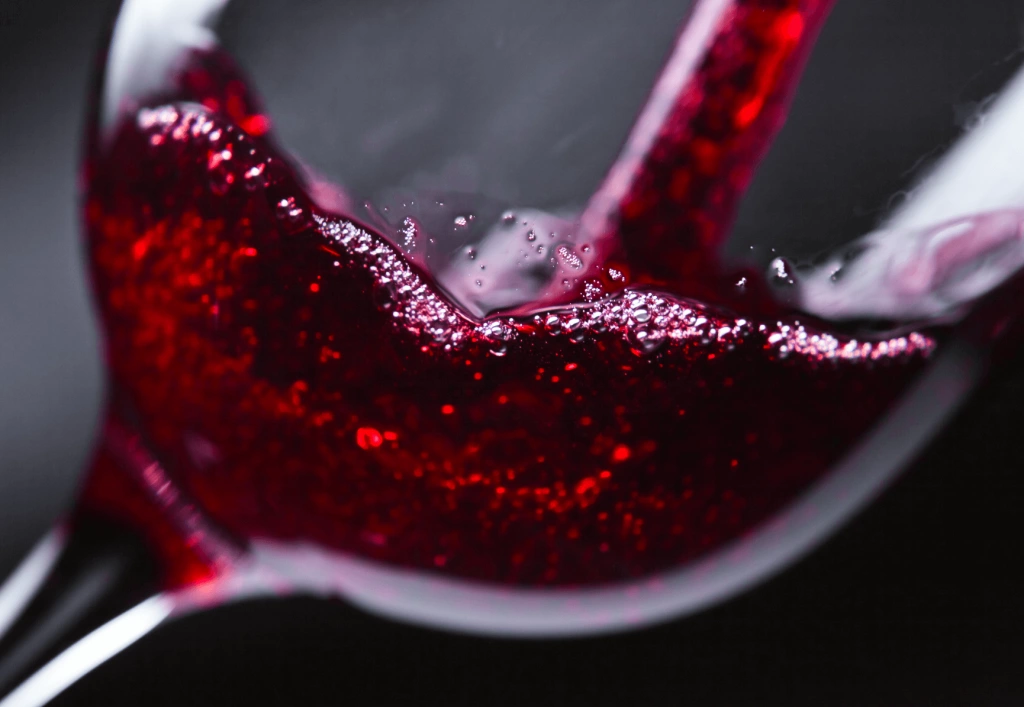
VieVinum will more than live up to its reputation as the leading wine fair in Central Europe when around 90 producers from Hungary, Slovenia, Slovakia, the Czech Republic, southern Germany and Austria unite to present a dazzling array of this special red grape variety.
The Central European winegrowing regions share a continental climate with low rainfall, cold, dry winters, peak rainfall in late spring, then a dry summer with hot days and noticeable cooling at night, followed by a mostly long, dry autumn.
This offers ideal conditions for the late-ripening and drought-resistant Blaufränkisch grape variety, which has taken a leading role in the wine-growing regions of Central Europe, albeit under very different names.
Fascinatingly multi-faceted
But regardless of whether it is called Kékfrankos, Blaufränkisch, Frankovka, Modra Frankinja or Lemberger, this variety produces great red wines thanks to its pronounced acidity and tannin structure.
At the same time, this grape variety also reflects the soil in an excellent way. In Austria alone, the range is enormous: the slate soils on the Eisenberg, loamy and chalky soils in central Burgenland, limestone and slate on the Leithaberg, sandy and gravelly soils on Lake Neusiedl and sandy limestone on the Spitzerberg in Carnuntum. This diversity is fascinating, and yet Austria only accounts for around 15% of the world's Blaufränkisch plantings.
How exciting it must be to compare the wine-growing regions in Hungary, which produces three times as much Kékfrankos as Austria! A good 30 wineries from different Hungarian wine regions will prove this when the ‘United Nations’ tasting bar opens at VieVinum in Vienna.
Producers from the Czech Republic, Slovakia, Slovenia and Württemberg in Germany are also represented. All major wine regions have selected their leading producers to demonstrate the similarities and diversity of the variety.
Is Blaufränkisch a great grape variety?
This question was debated by international wine experts at a conference at Arlberg Weinberg in Lech in 2022. You can read the article here.

"In numerous discussions and tastings with experts, it has been confirmed time and again that Blaufränkisch is one of the world's great grape varieties and is certainly on a par with Syrah, Cabernet Sauvignon and Pinot Noir in terms of quality."
Dorli Muhr explains: “Nevertheless, the variety is much less well-known internationally and generally less respected. This is certainly also because the variety is known by numerous names, which makes standardised communication difficult. Furthermore, due to the political conditions in Central Europe, there was no exchange between producers for decades, little research and selection work, and in many countries, there were also few quality endeavours. With this tasting bar at VieVinum, which we are calling the ‘United Nations of Blaufränkisch’, we would like to create a close alliance between those wineries that are considered to be the most committed in their respective countries of origin. At the same time, we want to give international expert visitors the opportunity of experiencing the broad spectrum of the variety, which represents a common umbrella for the winegrowing regions of Central Europe."
Shared Central European heritage
During VieVinum (25-27 May), the tasting bar ‘United Nations of Kékfrankos /Blaufränkisch) in the Hofburg Lounge will offer more than 100 wines to taste. Representatives from each wine region will be present to provide information about their wines and regions.
For the press
Many of the winemakers will be on site in person. As a focussed discussion is often difficult during a busy trade fair, we would be happy to arrange interview appointments in advance.
PARTICIPATING WINERIES
Hungary
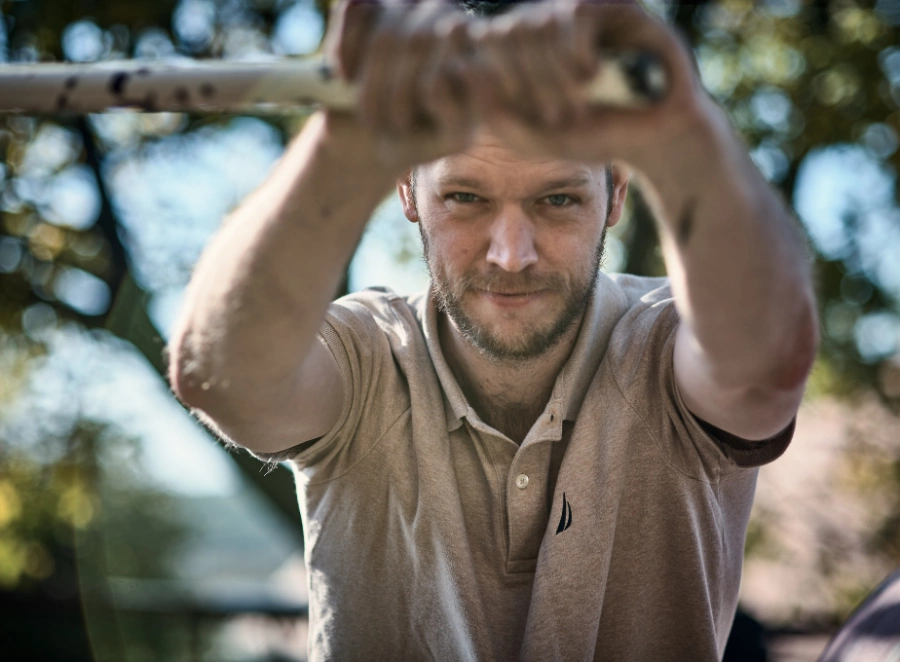
Heimann & Fiai
Szekszárd
Why do you love the Kékfrankos variety?
I love Kékfrankos because of the vividity, the freshness of aromas. While the variety yields a serious and layered wine, through its moderate tannins, zesty acidity and not-excessive alcohol, it is a great contemporary red variety. Also the nuances of climatic and soil differences shine through the wines of the different terroirs – when not overshadowed by winemaking.
Describe your Kékfrankos:
Bati Kereszt: a protected, calm parcel. Floral, playful, charming expression of Kékfrankos.
How does your Kékfrankos express the site where it was grown?
Bati Kereszt is an outlier in our climate, generally influenced by the excessively warm Great Plain. Through its protectedness, this vineyard shows a restraint in power, more playful aromas, a beautifully open face of Kékfrankos in Szekszárd.

Villa Gyetvai
Balaton
Why do you love the Kékfrankos variety?
Kékfrankos wines have a thousand faces, so it is very exciting to work with it.
Describe your Kékfrankos:
Medium intensity, ruby colour, this is a cool, elegant and lively wine.
How does your Kékfrankos express the site where it was grown?
Nice acid structure thanks to the soil, full-bodied and complex taste due to the proximity of Lake Balaton, fruitiness thanks to the grape variety.

Centurio Szőlőbirtok
Mátra
Why do you love the Kékfrankos variety?
The mostly volcanic Mátra with its coolish climate provides an exciting and outstanding expression of the variety.
Describe your Kékfrankos:
Single vineyard, 10 months barrel, lots of fruit.
How does your Kékfrankos express the site where it was grown?
Fruity, elegantly spiced wine with refreshing acidity, a touch of wood and moderate alcohol level.

Steigler Pince
Sopron
Why do you love the Kékfrankos variety?
I love Kékfrankos because this variety holds the best of its terroir and because of its versatility. The wine is not heavy, doesn’t have a big body, which would cover the soil, barrel and aging potential also. It has enough acidity, even in hot years, which keeps it stable and enjoyable for a long time.
Describe your Kékfrankos:
Terroir wine with well structured mica, plum, and acidity.
How does your Kékfrankos express the site where it was grown?
My Kékfrankos comes from the vineyard Spern Steiner. The soil on this vineyard contains only mica, with a little limestone. You can taste this hot, dry, mineralic soil and the concentrated fruit aromas all at once. The wine was 14 months long in the same 500 litre used barrel on fine lees and it was bottled without fining or filtering. This is the pure Spern Steiner vineyard.
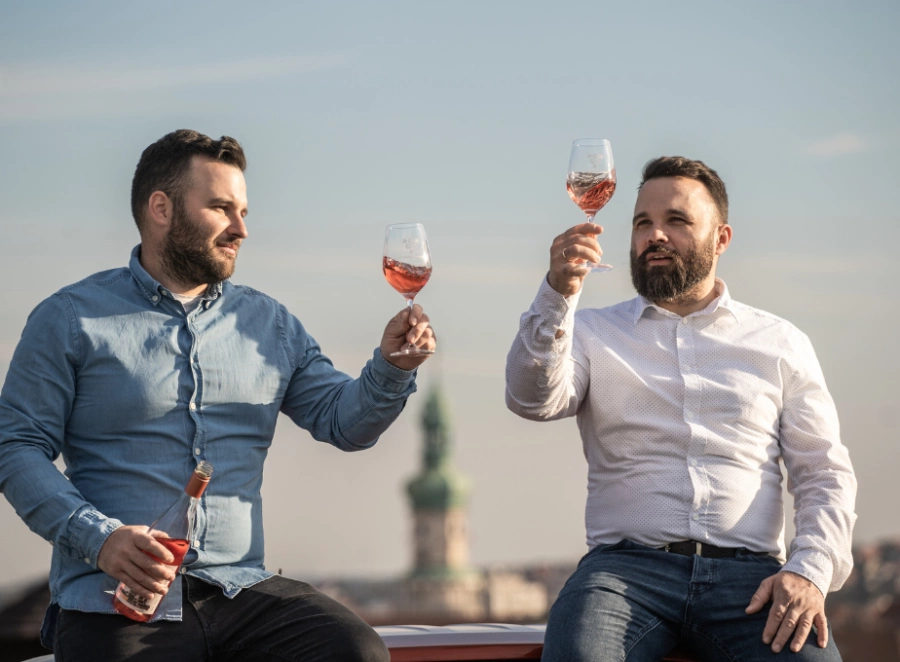
Stubenvoll Pince
Sopron
Why do you love the Kékfrankos variety?
On the one hand, it is our historical heritage, as the slogan of our wine region explains: "Sopron, capital of the Kékfrankos". On the other hand, it's our favorite red variety because it is extremely easy to work with both in the vineyard and in the cellar, and it can also cater to the taste of the modern age with its fruity, cool structure.
Describe your Kékfrankos:
Aged for 9 months in barrel. Very fruity, with a bold structure.
How does your Kékfrankos express the site where it was grown?
Due to the features of our wine region, it can display various faces/styles at different micro-vineyards. It can exhibit a very mineral, salty and elegant character.

Etyeki Kúria
Sopron
Why do you love the Kékfrankos variety?
It is a rich variety, which can express the terroir perfectly. The acidity-driven variety is able to produce a lively, fresh, easy-drinking wine, and is able to make the wine ageable. It is a versatile variety – red, rosé and sparkling can be produced from it.
Describe your Kékfrankos:
Medium body, fruity, spicy, vibrant acidity, long finish.
How does your Kékfrankos express the site where it was grown?
It expresses the terroir with a perfect balance of vibrant acidity, fruit complexity and velvety tannins.

Lajvér Borbirtok
Szekszárd
Why do you love the Kékfrankos variety?
The Kékfrankos grape has adapted quite well to the climate of the Carpathian Basin, however, it performs excellently against the extreme vintage phenomena of the past decades, such as spring frosts, summer drought, or the unexpected heavy rains that fall upon us during the harvest. Its aroma set lacks the immature green pepper character characteristic of cabernet and merlot, so we can make excellent rosé wines with a pure fruit aroma with an early harvest. If this feature is exploited even more, excellent white wines with a slight touch of pink can be made with blanc de noir technology. Of course, in addition to limiting the harvest, by choosing a later harvest, we can also make an excellent red wine with a deep color, fruity, medium tannin content, very elegant acidity, good flavor and good aging potential, which can stand its ground as an independent varietal wine or as a base for pairing with Bikavér.
Describe your Kékfrankos:
The common denominator in Lajvér Kékfrankos: fruitiness, balance and elegance.
How does your Kékfrankos express the site where it was grown?
The defining element of the soil is loess, so we have expressive fruitiness, whether we harvest from a lower - cooler terrace or from a warm, sunny terrace. From the early fresh red fruit to the ripe peaches and plums that appear in the wines, by choosing a good technology we bring this diversity to the glasses.

Szekretar Organic Winery
Szekszárd
Why do you love the Kékfrankos variety?
The most reliable grape which shows the terroir very well. It is a very unique grape that is produced in only a few countries.
Describe your Kékfrankos:
At Szekszard, it is elegant, moderate in acidity. Has a strong plum character.
How does your Kékfrankos express the site where it was grown?
Harvested from a warmer site, fermented with its own yeast, minimal sulphur added to show its real fruity and fresh character.

Neiner Családi Pince
Szekszárd
Why do you love the Kékfrankos variety?
I love its balance, reliability and diversity as it is able to produce a balanced crop even in the poorest vintages and outstanding in good years. Easy to handle and work with in the vineyard throughout the year.
It can be used to make wine from rosé and siller to red, and it is grown all over in the Carpathian basin. In addition to the varietal character, it reflects the characteristics of the terroir very well. It can be excellently combined with other varieties (e.g. in Bikavér), is suitable for making both light, fruity red wine and elegant, tannic wine. It can also be used to make a long aging, really GREAT wine.
Describe your Kékfrankos:
A once-in-a-lifetime wine, because of a hailstorm which affected the south side of the vineyard, resulting in the harvest of some raisined grapes.
How does your Kékfrankos express the site where it was grown?
Since we do not use additional yeast (spontaneous fermentation), we can preserve the characteristics of the site better. Loess and limestone helps us to express as much fruit as possible in our wines.
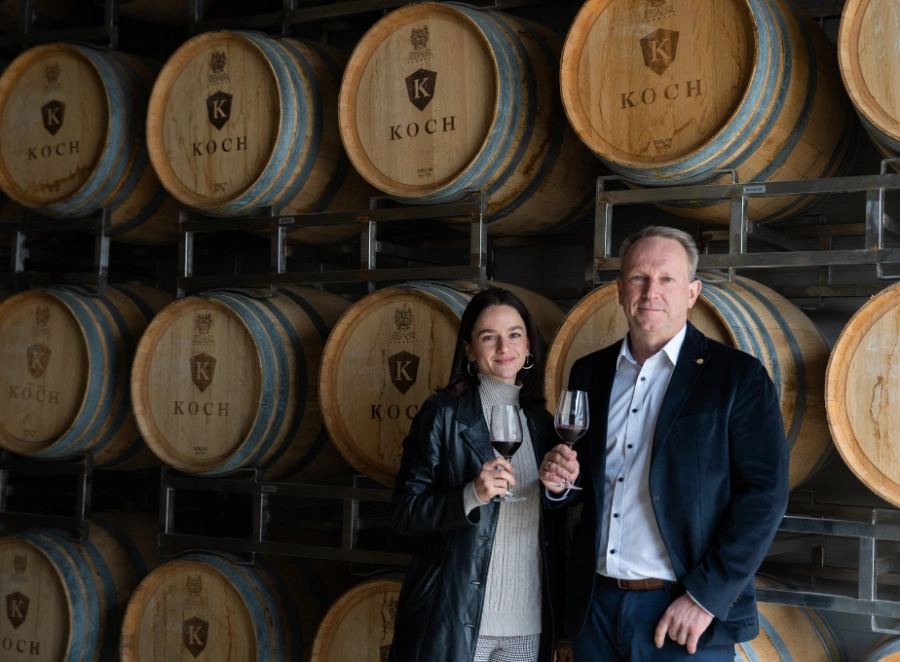
Koch Borászat
Villány
Why do you love the Kékfrankos variety?
It is a rich variety that allows us to present different styles and types of wine. A very rich variety with which we can make structured red wines with a high polyphenolic profile as well as light and spicy rosé wines.
Describe your Kékfrankos:
Medium-bodied red, vibrant acidity, long aftertaste.
Further Hungarian wineries at 'United Nations of Blaufränkisch' are:
Bujdosó Pincészet, Balaton
Szent Donát Borkúria, Balaton
Stumpf Pincészet, Eger
Torma Pincészet, Eger
Tóth Ferenc Pincészete, Eger
Benedek Pince, Mátra
Babarczi Szőlőbirtok és Pince, Pannonhalma
Eszterbauer Borászat, Szekszárd
Heimann Családi Birtok, Szekszárd
Sebestyén Pince, Szekszárd
Takler Borászat, Szekszárd
Németh János Pincészet, Szekszárd
Vida Családi Borbirtok, Szekszárd
Grál Borpince, Tolna
Bock Pincészet, Villány
Slovakia
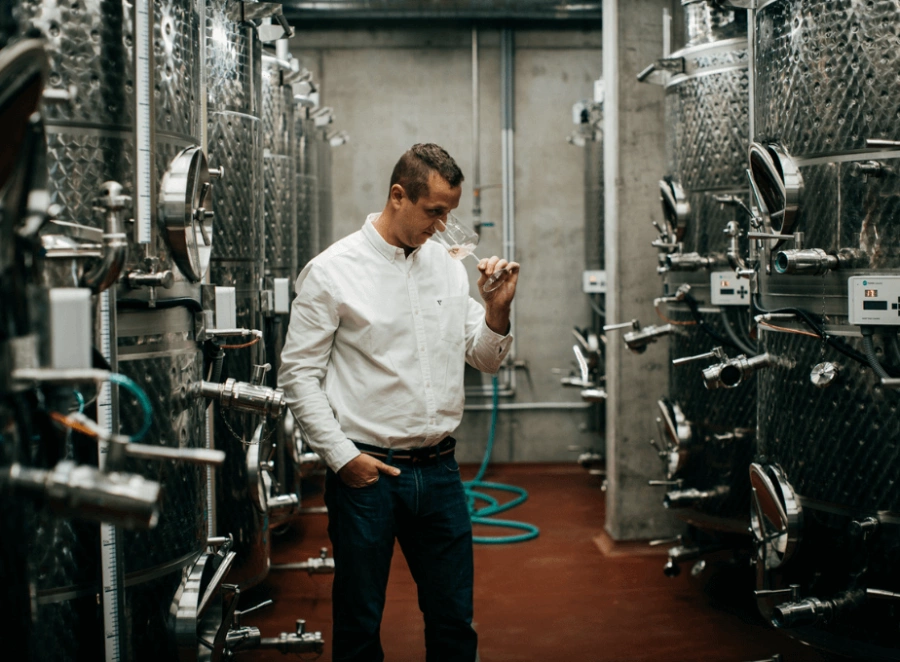
Világi Winery
Južnoslovenská
Why do you love the Frankovka Modrá variety?
The variety represents the terroir very well, hand in hand with trustfulness for each vintage.
Describe your Frankovka Modrá:
Beautiful balanced wine with the harmony of fruitiness, spiciness and body.
How does your Frankovka Modrá express the site where it was grown?
Exceptional quality through an exceptional place, nice mineralic touch through the volcanic soil, fully ripened with pleasent acidity. You can taste the long tradition and the professionalism of the winegrowing process.

Magula Family Estate
Malokarpatská
Why do you love the Frankovka Modrá variety?
For me, Frankovka Modrá is the queen of the red wines, which I love to spend time with, enjoy & explore.
Describe your Frankovka Modrá:
Spicy elegance with intensity, velvety smoothness and robust structure.
How does your Frankovka Modrá express the site where it was grown?
A south-eastern, loess based gentle slope provides consistently elegant, concentration, combining an exciting mixture of enchanting spiciness, pleasing fruitiness and steely acidity. The grapes from Rosenberg vineyard are healthy, always reach good ripeness and give wines that are exceptional in the great vintages and beyond captivating in the difficult ones.

Svetik
Nitrianska
Why do you love the Frankovka Modrá variety?
Frankovka Modrá is a merry lady and at the same time an elegant dame, it can make you happy in any situation.
Describe your Frankovka Modrá:
Wine perfectly matured in perfect harmony, with juicy fruit.
How does your Frankovka Modrá express the site where it was grown?
Both wines reflect unique subsoil created by the Sitno volcano giving the wines layers, minerality and full taste.
Further wineries from Slovakia are:
Bott Frigyes, Južnoslovenská
Karpatská Perla, Malokarpatská
Slobodne, Malokarpatská
VPS-Vinohradnictvo Pavelka, Malokarpatská
Pivnica Brhlovce, Nitrianska
Czechia

Plenér
Mikulovsko
Why do you love the Frankovka variety?
We love especially the combination between the variety and the limestone soil. It gives the wine extraordinary energy of fruity and mineral notes. We love the variability of the variety itself from very light fruity wines to heavy, full bodied great wines.
Describe your Frankovka:
Light, fruity, cherries, crispy, glou glou type of Frankovka.
How does your Frankovka express the site where it was grown?
Minerality, freshness, structure, well balanced, emotional.
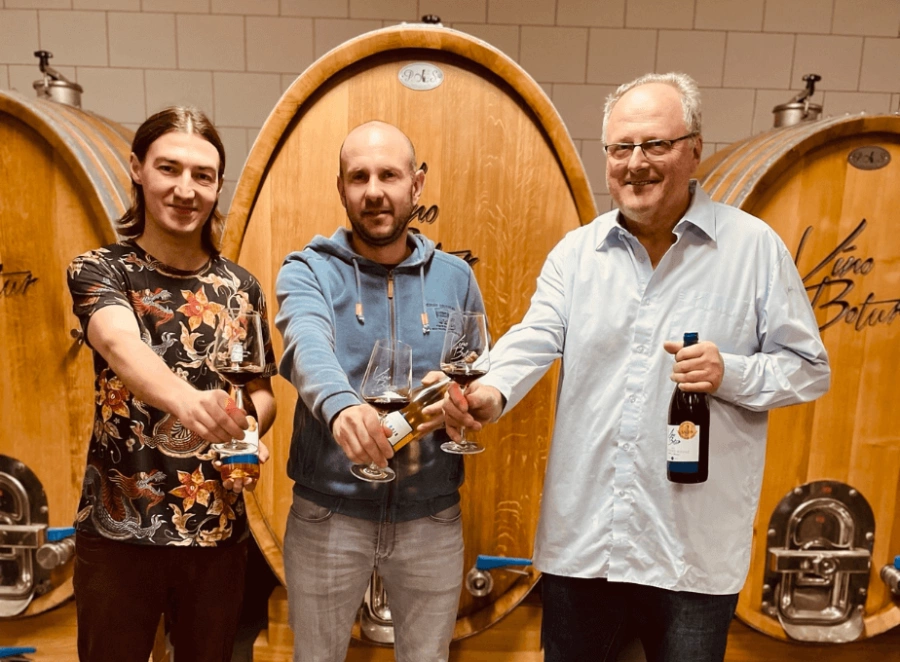
Víno Botur
Slovácko
Describe your Frankovka:
Beautiful ripeness, velvety and fullness with a touch of stone
How does your Frankovka express the site where it was grown?
A typical expression is the aroma of plums from our region and a velvety body expression, thanks to the higher calcium content in the soil.
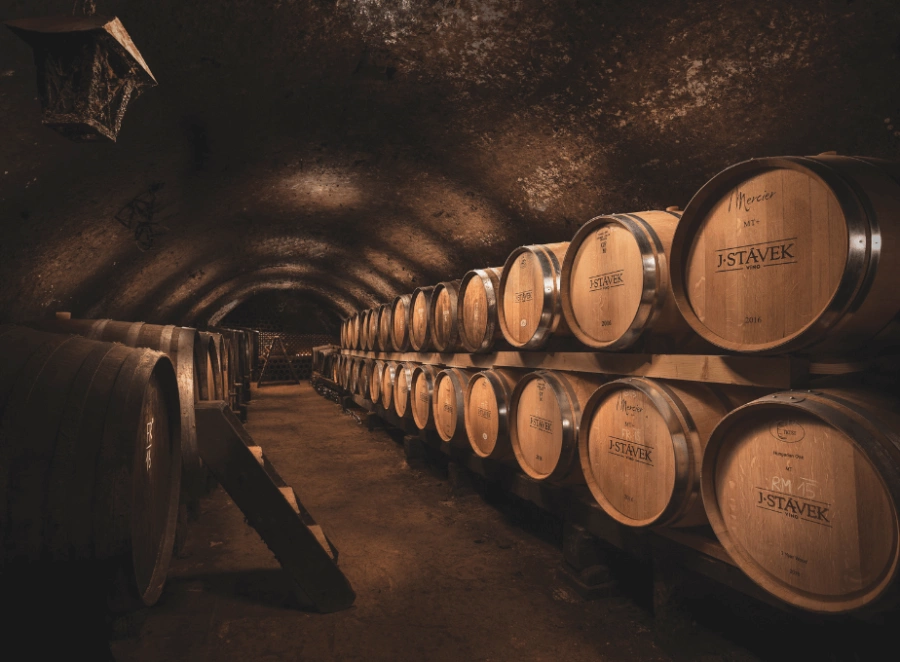
Víno J. Stávek
Velkopavlovicko
Why do you love the Frankovka variety?
In the Czech Republic, this is the only feminine variety. It can be young, playful or matured, balanced and also elegant and precious.
Describe your Frankovka:
Splendid combination of stone fruits, spiciness, fresh but balanced with a long aftertaste.
How does your Frankovka express the site where it was grown?
The typicity of Frankovka from our region is strong aroma of cherries and sour cherries, which is supported by a soil rich in calcium and magnesium.
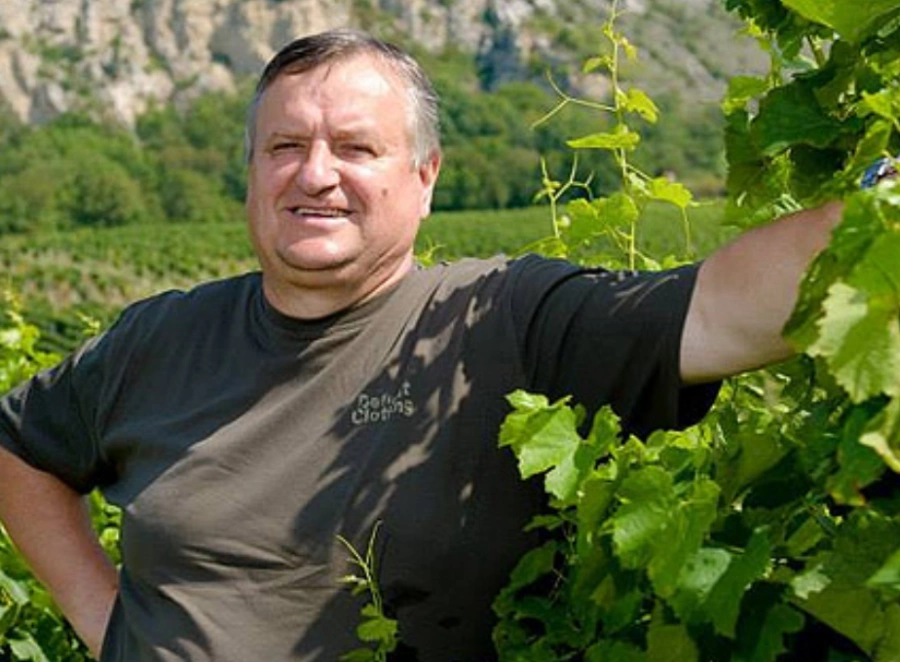
Vinselekt Michlovský
Velkopavlovicko
Why do you love the Frankovka variety?
Typical variety for our region giving great wines if it is properly treated in the vineyard and matured in oak.
Describe your Frankovka:
Harmonic, full bodied, fruity, cherries, plum butter (povidl) and log aftertaste.
How does your Frankovka express the site where it was grown?
Purple colour, fully structured, full of transformed blackberies and black cherries.

Vinařství Verýsek
Velkopavlovicko
Why do you love the Frankovka variety?
Typical variety for our area with combination of aged vineyards and matured in oak barrels.
Describe your Frankovka:
Harmonic, fruity-small forest fruits, crispy, spices and medium long after taste.
How does your Frankovka express the site where it was grown?
Purple color, structural.

Luboš Oulehla
Znojemsko
Why do you love the Frankovka variety?
Frankovka is very friendly at the vineyard. It´s also a pliant variety. We can make a lot of types of wines from these grapes.
Describe your Frankovka:
Wonderful mix of smoky, saline, and fruity tones.
How does your Frankovka express the site where it was grown?
In Dolní Kounice, there was a volcano milions years ago. Nowadays we grow our vineyards on that soil which called Granitoid. That is what makes our wines so unique and quirky.
Further wineries from Czech Republic are:
Vinařství Horák, Velkopavlovicko
Hana Mádlová, Velkopavlovicko
Slovenia
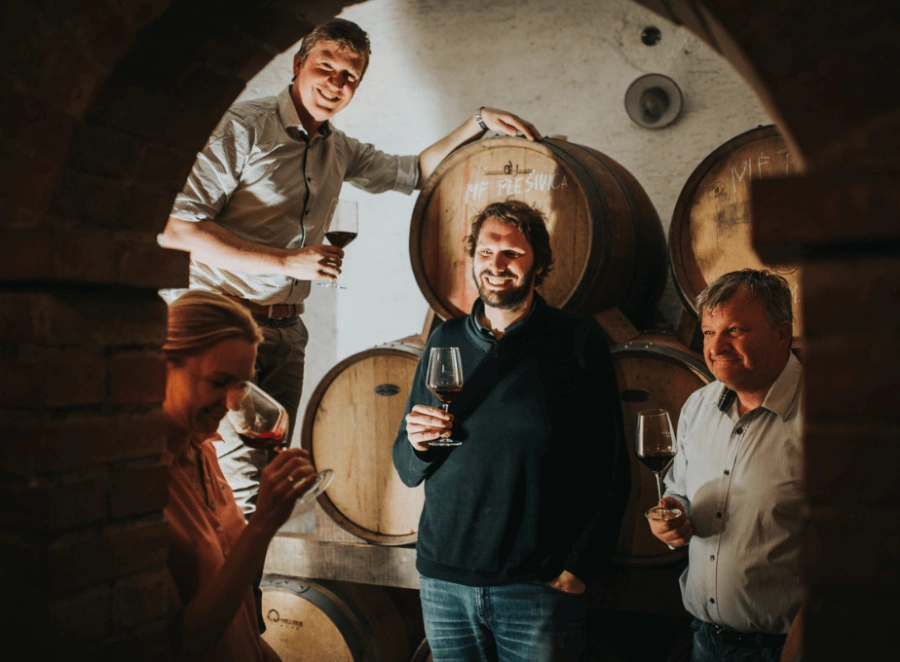
Vina Šuklje
Bela Krajina
Why do you love the Modra Frankinja variety?
Because this variety is a real sponge for terroir and is ageworthy. It is very versatile and gives elegant, vibrant and complex wines. It is also one of the best food companions that we know.
Describe your Modra Frankinja:
Elegant, deep, complex – mixing fruit, herbs and chalkiness
How does your Modra Frankinja express the site where it was grown?
Warm summers with high diurnal variation and a fair amount of rain on draining calcaerous soil gives elegant, vivid and deep wines, always showing some forest fruit character lifted by typical floral and Mediterranean herb undertones.

Vinska Klet Metlika
Bela Krajina
Why do you love the Modra Frankinja variety?
Because it is our traditional variety, it thrives very well in our environment, produces elegant wines and combines beautifully with various dishes.
Describe your Modra Frankinja:
Ruby, fresh, fruity, elegant, harmonious, complex.
How does your Modra Frankinja express the site where it was grown?
Warm summers with daily variation of temperature and a fair amount of rain on draining calcaerous soil give elegant, fresh and deep wines always showing some forest fruit character lifted by typical floral and Mediterranean herb undertones.

Kmetija Kobal
Bizeljsko-Sremič
Why do you love the Modra Frankinja variety?
Through the years we discovered the huge potential of the variety in our environment. The variety gives us fully ripened grapes for elegant, fruity, full-bodied wines, suitable for ageing.
Describe your Modra Frankinja:
Elegant, fruity, harmonic, grape in a glass.
How does your Modra Frankinja express the site where it was grown?
The vineyards of Kobal spread out over the finest wine-growing sites on the hill slopes in the wine region Bizeljsko-Sremic. The area is a narrow strip along the northern bank of the Sava River, protected by the mountains from the harsh north winds. The terrain, not just of the Kobal vineyards but the entire region, is made up of steep-sloped vineyards and narrow, wind-rich hill valleys.

Albiana
Dolenjska
Why do you love the Modra Frankinja variety?
Modra Frankinja is simply a variety for the future. Versatile, unique and trendy at any time.
Describe your Modra Frankinja:
Elegant and juicy with lots of fruit and spice.
How does your Modra Frankinja express the site where it was grown?
Our Alto collection is a selection of single plot vineyards with specific conditions and unique soil profile. Modra Frankinja Alto is collected from our 'Zajčer' single vineyard which lies on clayish soil with specific 'grey' limestone bedrock. Vineyard is positioned at 410 m altitude with SW exposure. Vines react on those conditions with slow maturation of grapes with crispy acidity and mineral touch, which is becoming quite typical for Dolenjska - the coolest wine sub-region (district) in Slovenia.

Roka Winery
Štajerska
Why do you love the Modra Frankinja variety?
Modra Frankinja delivers a thrilling vibrancy as a wine – poised, elegant, juicy, alive, fresh and versatile. The character of the variety is very versatile and can interact superbly with differing cellar techniques, managing to maintain varietal typicity (with the exception of too much oak) and it transmits terroir exceptionally well.
Describe your Modra Frankinja:
Drinkable (do you need anything else?!)
How does your Modra Frankinja express the site where it was grown?
We achieve great concentration, yet maintain energy and vibrancy in the wine. Cordon pruning (unusual for our region) brings low yield and concentration, the soil delivers aroma and complexity and the climate maintains freshness and elegance.

Vino Greif
Štajerska
Why do you love the Modra Frankinja variety?
Traditional variety, easy to work with, very versatile, good terroir expression.
Describe your Modra Frankinja:
Elegant, ruby, fresh, fruity, with a hint of spice.
How does your Modra Frankinja express the site where it was grown?
Our Modra Frankinja is grown on sandy soil with slate deposits, therefore the wine has bit of a lighter body with minerality and smooth tannins. Pohorje terroir also delivers forest fruit especially cherry notes, vibrant acidity and hint of spice.
Further wineries from Slovenia are:
Klet Krško, Bizeljsko-Sremič
Marof, Prekmurje
Kobal wines, Štajerska
Dveri Pax, Štajerska
Austria

Bio-Weingut Robert Payr
Carnuntum
Why do you love the Blaufränkisch variety?
Blaufränkisch is a magnificent ‘soil indicator’. It reflects the terroir wonderfully.
Describe your Blaufränkisch:
Spitzerberg is elegance. Fresh, fruity, mineral with fine, long tannins.
How does your Blaufränkisch express the site where it was grown?
Terroir in a glass at its best.

Weingut Krutzler
Eisenberg
Why do you love the Blaufränkisch variety?
No other grape variety can reflect the diversity of the soil, region and climate as precisely as Blaufränkisch.
Describe your Blaufränkisch:
Perwolff is pure Eisenberg: multi-layered, savoury, salty and has depth.
How does your Blaufränkisch express the site where it was grown?
The minerality, spiciness and saltiness of the soils are typical of Eisenberg, as well as an unmistakable ‘forest soil flavour’, as our vineyards are mostly surrounded by deciduous forests.
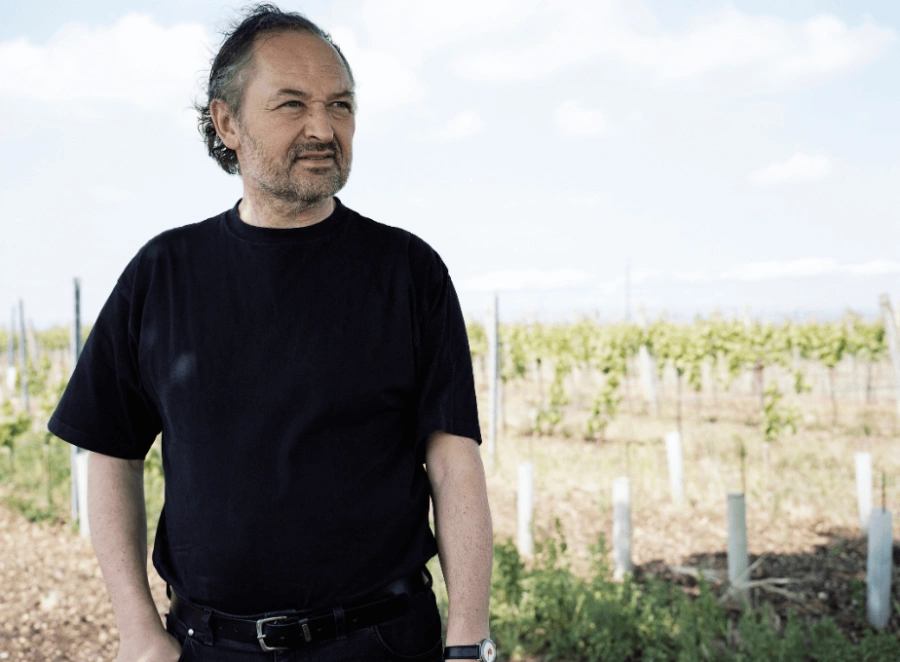
Weingut A&H Nittnaus
Leithaberg
Why do you love the Blaufränkisch variety?
Because it has a balance of power and elegance that is hard to find. Because it expresses the terroir like no other. Because it is THE traditional red wine variety of Burgenland, our home. Because it is best prepared for global warming thanks to its late ripening and stable acidity.
Describe your Blaufränkisch:
This wine ideally combines body and finesse, power and minerality.
How does your Blaufränkisch express the site where it was grown?
The Jungsberg is a warm, early site due to its southeastern exposition and proximity to Lake Neusiedl. This leads to high maturity and powerful structure. At the same time, the slate soil ensures a mineral, elegant length and aromatic complexity. In addition to the typical cherry fruit, many spicy and floral components are noticeable.
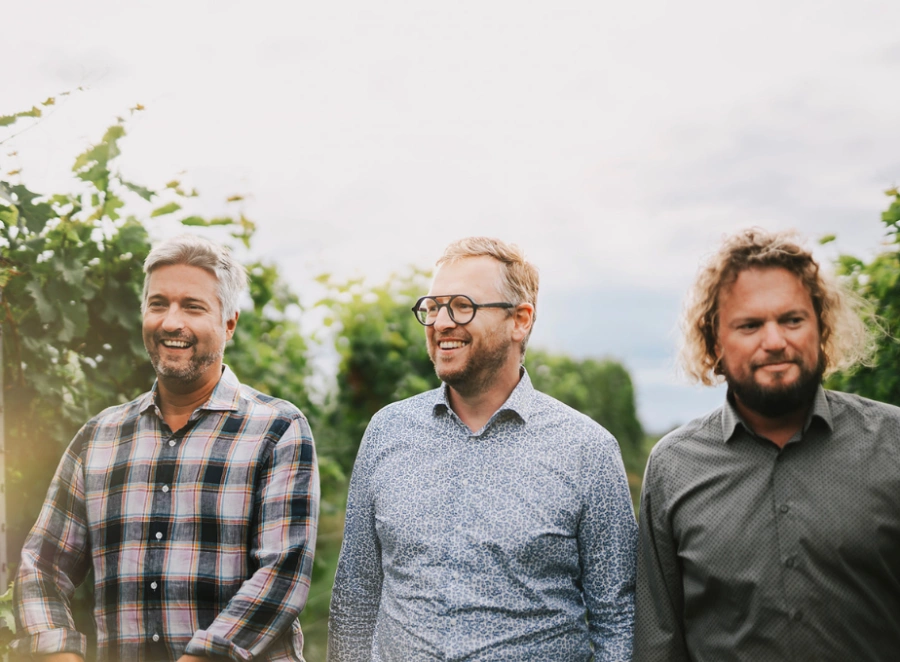
Weingut Esterhazy
Leithaberg
Why do you love the Blaufränkisch variety?
Blaufränkisch always keeps its own, typical flavour profile – no matter what style of wine you are going to produce. And Blaufränkisch also transports the different soils in a very unique and subtle way into the wine.
Describe your Blaufränkisch:
Barren and soil driven cool climate wine with attitude.
How does your Blaufränkisch express the site where it was grown?
This Blaufränkisch was grown on barren and fossil-rich limestone soil at the hillside of the Leithaberg. All the plots face south-east, protecting the vines from the hot afternoon sun, which can burn the skins of the berries and cause early ripening. The soil adds dark fruit to the wine's aroma profile and the exposure allows the berries to ripen perfectly without accumulating too much sugar. The wine retains its freshness and soft, ripe tannins.

Weingut Feiler-Artinger
Leithaberg
Why do you love the Blaufränkisch variety?
Wonderful nose, great taste, super elegance! That's Blaufränkisch!
Describe your Blaufränkisch:
Fruity, spicy, crisp, fresh, complex and still elegant.
How does your Blaufränkisch express the site where it was grown?
Always perfect. On this fossil limestone soil, Blaufränkisch shows a deep black pepper spiciness beside the dark cherry fruit; plus great length and complexity.
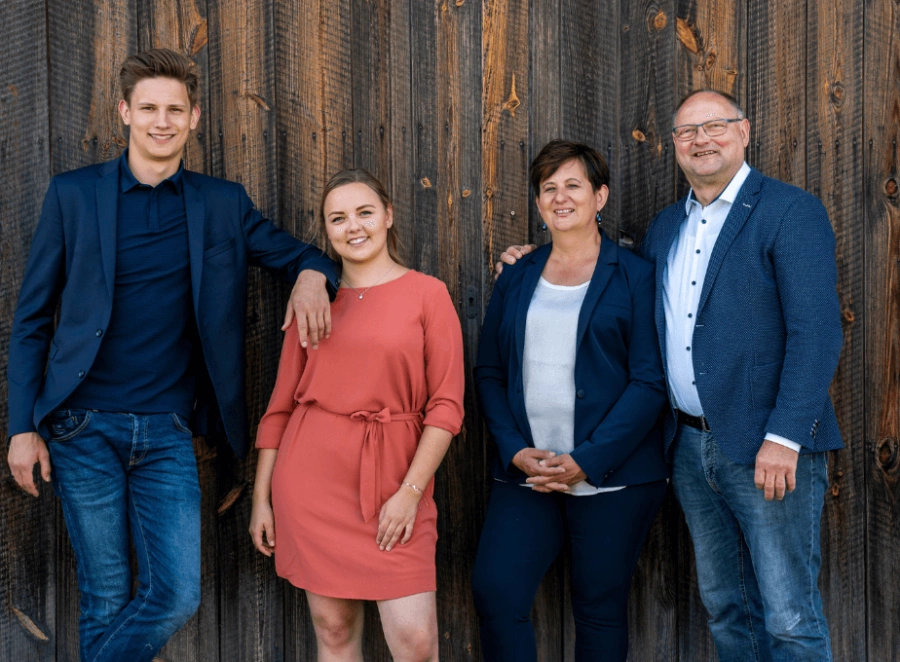
Remushof Jagschitz
Leithaberg
Why do you love the Blaufränkisch variety?
Blaufränkisch is an old traditional Austrian variety. Uncomplicated and multifaceted. Spicy notes stand out from the other varieties.
Describe your Blaufränkisch:
Full-bodied wine with precise minerality and complex aroma.
How does your Blaufränkisch express the site where it was grown?
Our Blaufränkisch reflects the character of our terroir. It is characterised by limestone-free rock-brown soil made of crystal stone or crystalline debris. Preferred by Lake Neusiedl, the location is integrated in the heat storage zone of Lake Neusiedl during the day. The nights are cooler because colder air currents from the Leitha mountain range strongly influence the location in its aromatics.
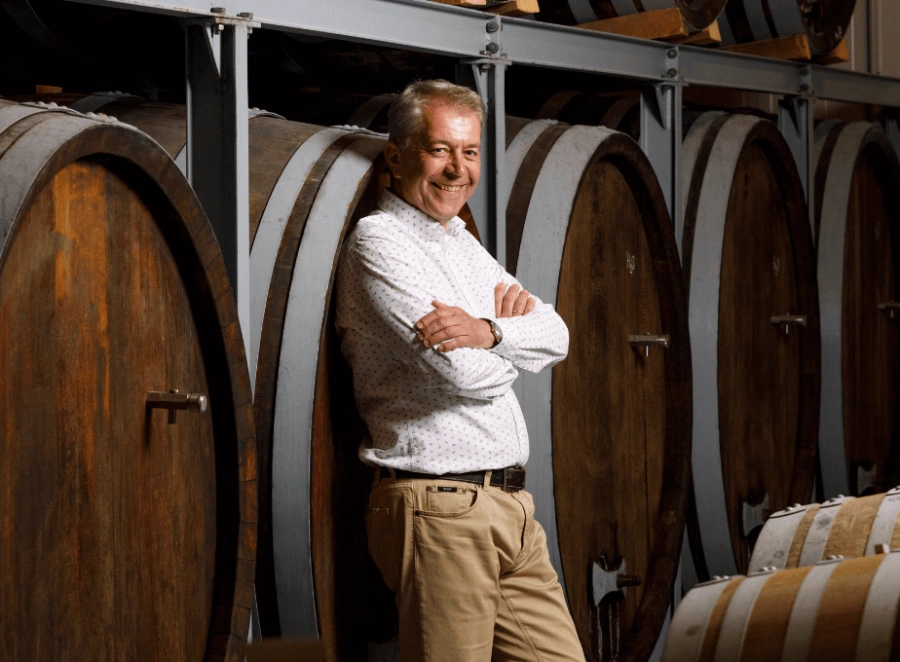
Weingut Erwin Tinhof
Leithaberg
Describe your Blaufränkisch:
A picture of finesse and elegance.
How does your Blaufränkisch express the site where it was grown?
Sloping towards the south, this old, deeply rooted vineyard enjoys the sun from morning to night. An ideal prerequisite for concentrated Blaufränkisch wines full of character.
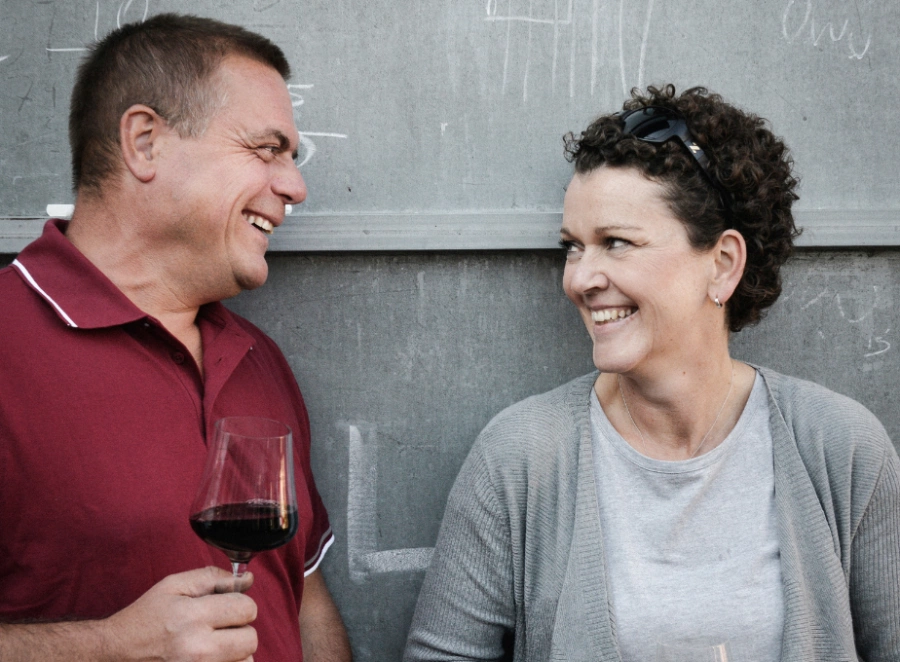
Weingut Günter + Regina Triebaumer
Leithaberg
Why do you love the Blaufränkisch variety?
Blaufränkisch is a true Rust core competence and has always played first fiddle.
Describe your Blaufränkisch:
Weathered schist and loam generate cool-fruited Blaufränkisch.
How does your Blaufränkisch express the site where it was grown?
Dark cherries and black pepper aromas, very typical for Blaufränkisch from Rust, year after year.
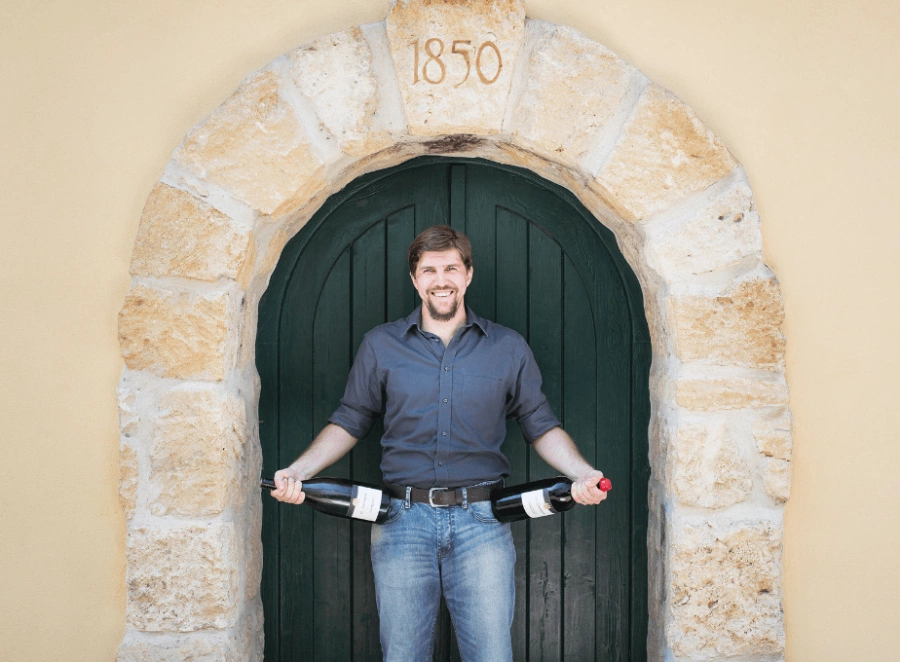
Weingut Stefan Zehetbauer
Leithaberg
Why do you love the Blaufränkisch variety?
There are not many varieties that can combine characteristics from the specific vineyard it grows in and the appellation as a whole so beautifully together and still retain a puristic expression as a Blaufränkisch.
Describe your Blaufränkisch:
"Slatey", sophisticated, meaty, yet fresh and balanced, leaves an impression.
How does your Blaufränkisch express the site where it was grown?
It captures perfectly the duality, and thus the liveliness, of the wines coming from the Steinberg. Heat retaining mica slate rocks and balancing cool air from the encompassing woods. Powerful and deep but juicy tannins and a prolonged freshness that creates a wonderful tension on the palate.
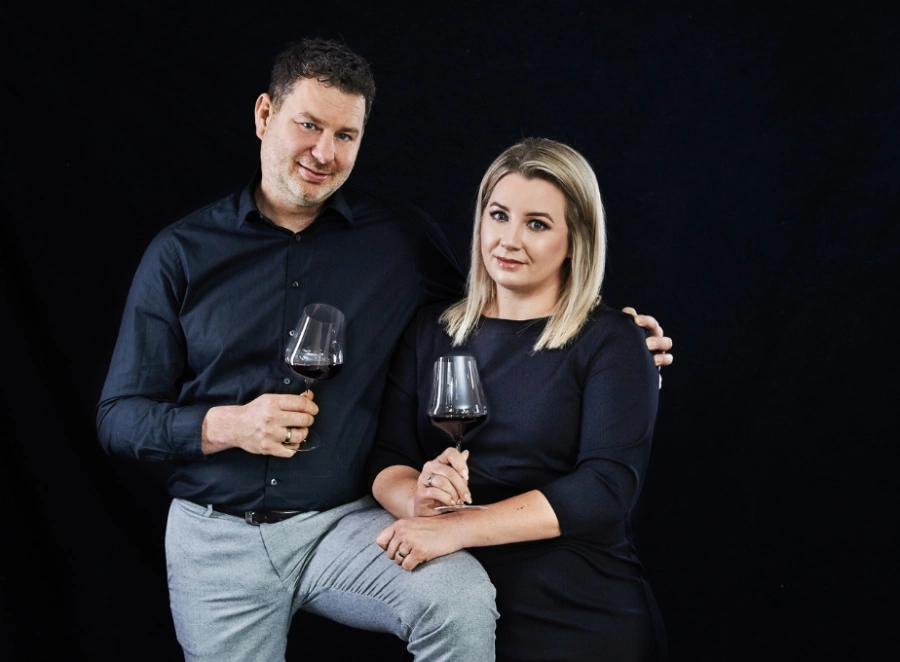
Weingut Josef Tesch
Mittelburgenland
Why do you love the Blaufränkisch variety?
Blaufränkisch reflects our deep attachment to the Burgenland terroir.
Describe your Blaufränkisch:
It reflects the character of our terroir; a wine full of body, personality and essence.
How does your Blaufränkisch express the site where it was grown?
Blaufränkisch grapes used for the Patriot come from 70 year-old vines which are deeply rooted in weathered crystalline slate. This transports key nutrients to the grapes, which gives them their unique aroma. In the Patriot the spirit of the earth is revealed, as is the power of the soil in which the grapes are cultivated.
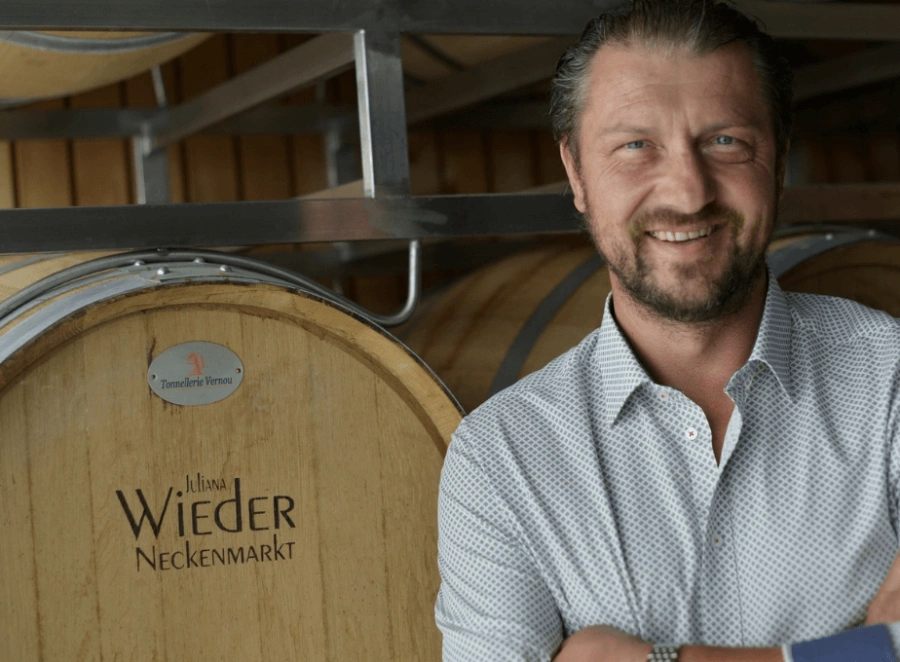
Weingut Juliana Wieder
Mittelburgenland
Why do you love the Blaufränkisch variety?
Blaufränkisch is the grape variety which perfectly reflects our soils in Neckenmarkt.
Describe your Blaufränkisch:
Elegant combination of minerality of the soil and the character of this vintage.
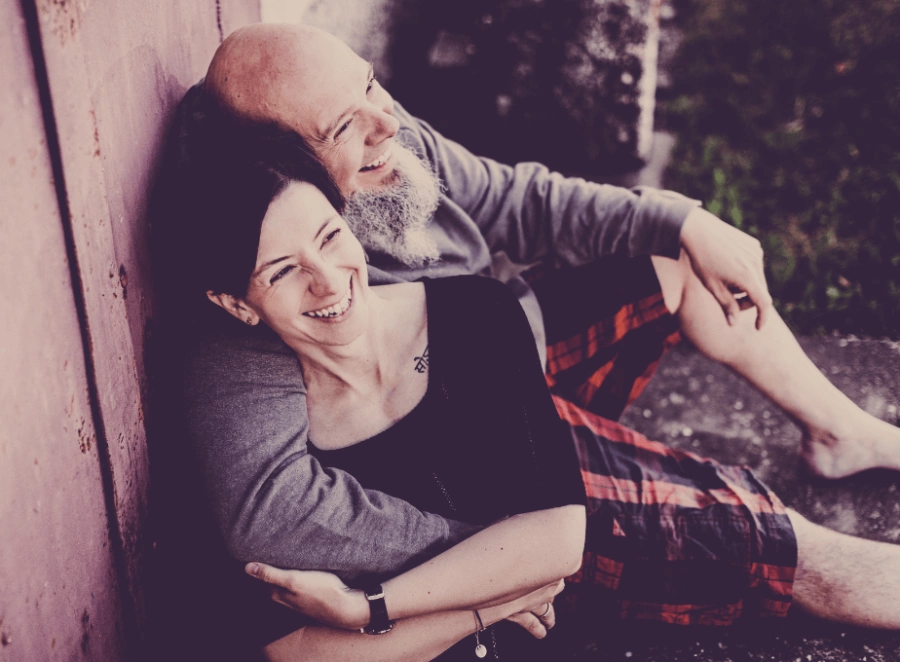
Weingut Thomas & Claudia Hareter
Neusiedlersee
Why do you love the Blaufränkisch variety?
Because it’s the best red for cool minerality
Describe your Blaufränkisch:
Fine, juicy tannins, mineral length, dark berries, great freshness
How does your Blaufränkisch express the site where it was grown?
Very cool aroma, finest texture, chalky soil, exact and straight – that’s the single vineyard Zeiselberg

Weingut JURIS
Neusiedlersee
Why do you love the Blaufränkisch variety?
We love Blaufränkisch because it is a grape variety that is able to connect our past with our future. It has always been grown in our area and it can cope with a warming climate.
Describe your Blaufränkisch:
Complex, floral, dark-fruited with bright acidity and fine-grained tannins.
How does your Blaufränkisch express the site where it was grown?
Our Blaufränkisch is grown on lime rich soils on a slope facing SSW. Old vines can reach the deeper layers high in iron. Due to that we are able to harvest fully ripe Blaufränkisch ideally between the last week of September to mid October. Blaufränkisch Ungerberg from Gols is often characterised by a floral, violet like aroma with fine grained tannins and well integrated acidity. In some older vintages you can find an umami like scent.
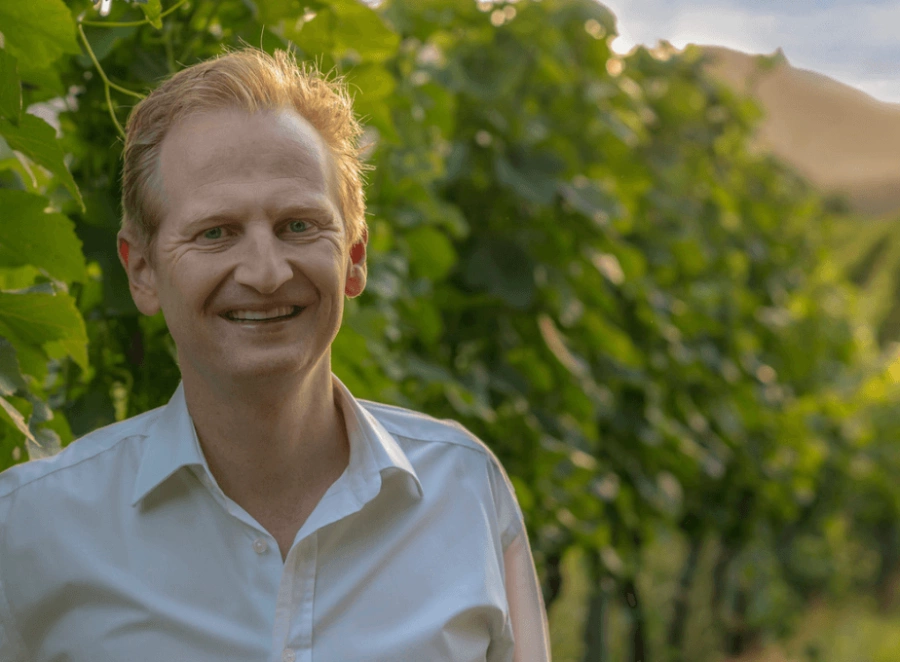
Markus Utiger
Neusiedlersee
Why do you love the Blaufränkisch variety?
Why a single-vineyard wine in Austria? Because the vines thrive in this climate and Blaufränkisch is a great structural variety.
Describe your Blaufränkisch:
Single-vineyard terroir wine with structure and extremely long-lived.
How does your Blaufränkisch express the site where it was grown?
Deep colour, firm tannins, masculine body
Further wineries from Austria are:
Weingut Artner, Carnuntum
Weingut Dorli Muhr, Carnuntum
Weingut Klemens Pelzmann, Carnuntum
Weingut Michaela Riedmüller, Carnuntum
Groszer Wein, Eisenbeg
Weingut Jalits, Eisenberg
Weingut Kopfensteiner, Eisenberg
StephanO DAS-WEIN-GUT, Eisenberg
Weingut Stubits, Eisenberg
Weine Thom Wachter, Eisenberg
Weingut Wachter Wiesler, Eisenberg
Weingut Braunstein, Leithaberg
Weingut Nehrer, Leithaberg
Weingut Gesellmann, Mittelburgenland
Gober & Freinbichler, Mittelburgenland
Weingut Silvia Heinrich, Mittelburgenland
Rotweine Lang, Mittelburgenland
Weingut Heinrich, Neusiedlersee
Weingut Ernst Triebaumer, Rust
Germany

Weingut Schnaitmann
Württemberg
Why do you love the Lemberger variety?
It was not love at first sight, because I am a Pinot guy. But I have learned during the last few years, that Lemberger might be the best red expression of many of our great, still widely unknown terroirs in the future.
Describe your Lemberger:
Elegance and ageability, ethereal freshness and hidden power
How does your Lemberger express the site where it was grown?
Grown on the deeper and warmer gypsum marl sites (lots of free chalk, with a high percentage of clay) it shows more spice and minerality, grown on the higher coloured marl sites there is more fruit character. 100 % whole bunch fermentation supports both.

Weingut Beurer
Württemberg
Why do you love the Lemberger variety?
Lemberger shows the high altitude vineyard of the Remstal with freshness and fruit very well.
Describe your Lemberger:
Fresh, crispy, juicy
How does your Lemberger express the site where it was grown?
Cool aromatic, fresh and juicy

Weingut Eisele
Württemberg
Why do you love the Lemberger variety?
Because it beautifully reflects our terroir in the Neckar Valley. Especially the shell limestone and its characteristics.
Describe your Lemberger:
Mineral, ethereal, light barrel notes, fresh but expressive, light tannins.
How does your Lemberger express the site where it was grown?
The shell limestone characterises our Lemberger with fine minerality, ethereal notes and ensures a wonderful drinking flow.
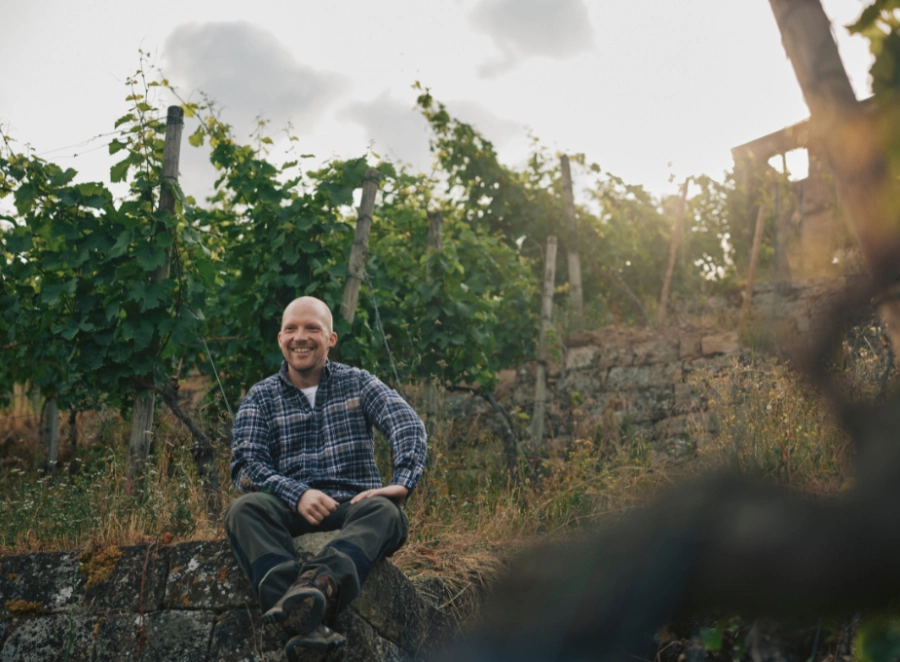
Weingut Karl Haidle
Württemberg
Why do you love the Lemberger variety?
Because it can be fresh, juicy and have powerful herbal notes at the same time. Also it shows its terroir very well!
Describe your Lemberger:
Herbal, etheral and elegant.
How does your Lemberger express the site where it was grown?
Like every good variety, it shows the site in the form of a unique aroma and structure.
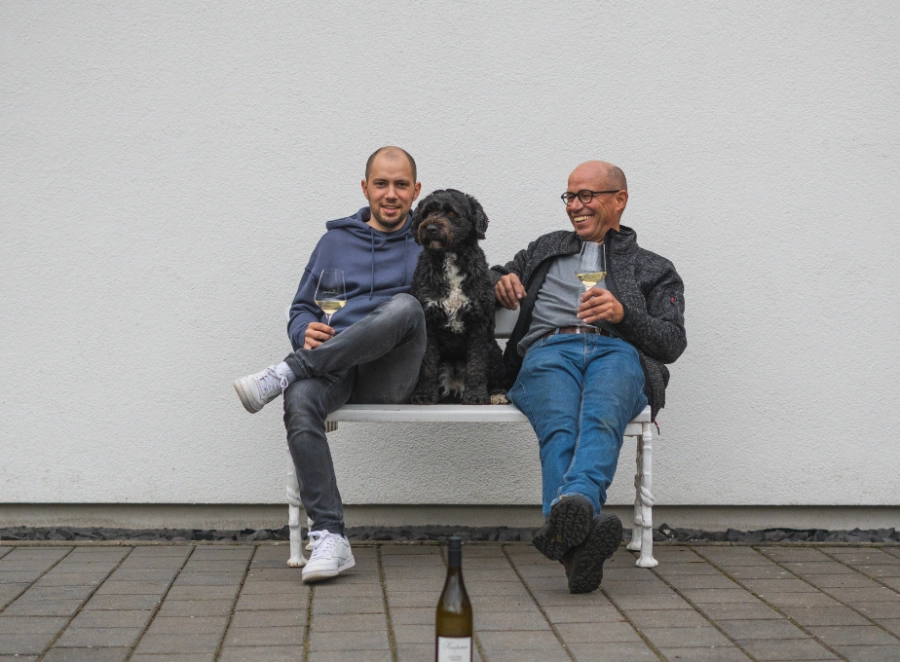
Weingut Kusterer
Württemberg
Why do you love the Lemberger variety?
The grape variety has the ability to reflect its origin and thus the terroir in the wine.
Describe your Lemberger:
It combines the concentration of the vintage with a fresh terroir-influenced minerality of the soil.
How does your Lemberger express the site where it was grown?
The Lemberger vines grow on top of an exposed rock formation made out of sandstone in the middle of the historic terraced vineyards. This gives the wine complexity and mineral notes with spicy flavours.
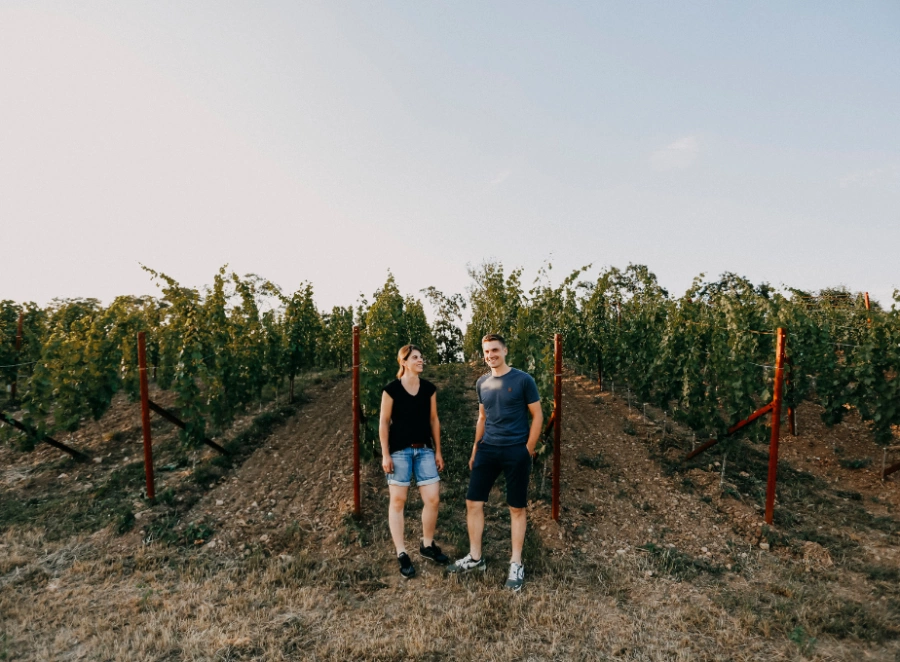
Weingut Lassak
Württemberg
Why do you love the Lemberger variety?
Depending on the terroir, Lemberger displays a complex aroma, depth, minerality and good longevity with a fine supporting acidity. This makes Lemberger a grape variety with huge potential.
Describe your Lemberger:
Elegance, fine grained tannins, length, minerality, purity
How does your Lemberger express the site where it was grown?
The Lemberger vines grow in the STEIGE on upper shell limestone with clay soil. This gives the wine a finesse and complexity with spicy notes.

Weingut Roter Faden
Württemberg
Why do you love the Lemberger variety?
Lemberger can mirror its origin as no other variety can, especially the unique vividness when it grows on limestone.
Describe your Lemberger:
Long, deep, complex.
How does your Lemberger express the site where it was grown?
Limestone and Lemberger makes for a fantastic couple – crispy acidity, fine tannins, fruit, herbs!
INFO
Date: Saturday 25. May to Monday 27. May 2024
Location: VieVinum, Hofburg Lounge at the Hofburg VIENNA
Language: English / German
A valid ticket for VieVinum is required.











